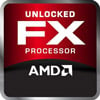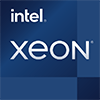
AMD A8-3800 Benchmark, Test and specs
Last updated:
The AMD A8-3800 has 4 cores with 4 threads and is based on the 1. gen of the AMD A series. The processor uses a mainboard with the FM1 socket and was released in Q3/2011. The AMD A8-3800 scores 368 points in the Geekbench 5 single-core benchmark. In the Geekbench 5 multi-core benchmark, the result is 1,354 points.
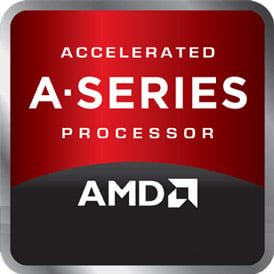
| Name: | AMD A8-3800 |
|---|---|
| Family: | AMD A (112) |
| CPU group: | AMD A8-3000 (4) |
| Architecture: | Llano (K10) |
| Segment: | Desktop / Server |
| Generation: | 1 |
| Predecessor: | -- |
| Successor: | -- |
CPU Cores and Base Frequency
The AMD A8-3800 has 4 CPU cores and can calculate 4 threads in parallel. The clock frequency of the AMD A8-3800 is 2.40 GHz (2.70 GHz). The number of CPU cores greatly affects the speed of the processor and is an important performance indicator.
| CPU Cores / Threads: | 4 / 4 |
|---|---|
| Core architecture: | normal |
| Cores: | 4x |
| Hyperthreading / SMT: | No |
|---|---|
| Overclocking: | Yes |
| Frequency: | 2.40 GHz |
| Turbo Frequency (1 Core): | 2.70 GHz |
| Turbo Frequency (4 Cores): | 2.70 GHz |
Internal Graphics
The AMD A8-3800 has integrated graphics, called iGPU for short. Specifically, the AMD A8-3800 uses the AMD Radeon HD 6550D, which has 400 texture shaders and 5 execution units. The iGPU uses the system's main memory as graphics memory and sits on the processor's die.
| GPU name: | AMD Radeon HD 6550D |
|---|---|
| GPU frequency: | 0.60 GHz |
| GPU (Turbo): | No turbo |
| Compute units: | 5 |
| Shader: | 400 |
| Hardware Raytracing: | No |
| Release date: | Q2/2011 |
| Max. displays: | 2 |
|---|---|
| Generation: | 3 |
| Direct X: | 11 |
| Technology: | 32 nm |
| Max. GPU Memory: | 1 GB |
| Frame Generation: | No |
Hardware codec support
A photo or video codec that is accelerated in hardware can greatly accelerate the working speed of a processor and extend the battery life of notebooks or smartphones when playing videos.
| h265 / HEVC (8 bit): | No |
|---|---|
| h265 / HEVC (10 bit): | No |
| h264: | Decode |
| VP8: | No |
| VP9: | No |
| AV1: | No |
|---|---|
| AVC: | Decode |
| VC-1: | Decode |
| JPEG: | Decode / Encode |
Memory & PCIeThe processor can use up to memory in 2 (Dual Channel) memory channels. The maximum memory bandwidth is 25.6 GB/s. The memory type as well as the amount of memory can greatly affect the speed of the system. |
|
| Memory type: | Memory bandwidth: |
|---|---|
| DDR3-1600 | 25.6 GB/s |
| Max. Memory: | |
| Memory channels: | 2 (Dual Channel) |
| ECC: | No |
| PCIe: | |
| PCIe Bandwidth: | -- |
Thermal ManagementThe thermal design power (TDP for short) of the processor is 65 W. The TDP specifies the necessary cooling solution that is required to cool the processor sufficiently. The TDP usually gives a rough idea of the actual power consumption of the CPU. |
|
|---|---|
| TDP (PL1 / PBP): | 65 W |
| TDP (PL2): | -- |
| TDP up: | -- |
| TDP down: | -- |
| Tjunction max.: | -- |
Technical details
The AMD A8-3800 is made in 32 nm. The smaller the manufacturing process of a CPU, the more modern and energy-efficient it is. Overall, the processor has 4.00 MB cache. A large cache can greatly speed up the processor's speed in some cases such as games.
| Technology: | 32 nm |
|---|---|
| Chip design: | |
| Socket: | FM1 |
| L2-Cache: | -- |
| L3-Cache: | 4.00 MB |
| AES-NI: | No |
| Operating systems: | Windows 10, Linux |
| Virtualization: | AMD-V |
|---|---|
| Instruction set (ISA): | x86-64 (64 bit) |
| ISA extensions: | SSE3, SSE4a |
| Release date: | Q3/2011 |
| Release price: | 130 $ |
| Part Number: | -- |
| Documents: | -- |
Rate this processor
Benchmark results

The benchmark results for the AMD A8-3800 have been carefully checked by us. We only publish benchmark results that have been created by us or that have been submitted by a visitor and then checked by a team member. All results are based on and fullfill our benchmark guidelines.
Geekbench 5, 64bit (Single-Core)
Geekbench 5 is a cross plattform benchmark that heavily uses the systems memory. A fast memory will push the result a lot. The single-core test only uses one CPU core, the amount of cores or hyperthreading ability doesn't count.
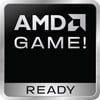
|
AMD Phenom II X4 B95
4C 4T @ 3.00 GHz |
||

|
AMD Athlon II X2 240e
2C 2T @ 2.80 GHz |
||
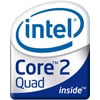
|
Intel Core 2 Quad Q8400
4C 4T @ 2.66 GHz |
||
|
|
AMD A8-3800
4C 4T @ 2.70 GHz |
||
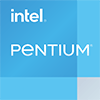
|
Intel Pentium E5400
2C 2T @ 2.70 GHz |
||
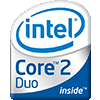
|
Intel Core2 Duo E7200
2C 2T @ 2.53 GHz |
||

|
MediaTek Helio G70
8C 8T @ 2.00 GHz |
||
Geekbench 5, 64bit (Multi-Core)
Geekbench 5 is a cross plattform benchmark that heavily uses the systems memory. A fast memory will push the result a lot. The multi-core test involves all CPU cores and taks a big advantage of hyperthreading.

|
Intel Core i3-6100U
2C 4T @ 2.30 GHz |
||
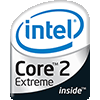
|
Intel Core 2 Extreme QX6850
4C 4T @ 3.00 GHz |
||

|
Qualcomm Snapdragon 660
8C 8T @ 2.20 GHz |
||
|
|
AMD A8-3800
4C 4T @ 2.70 GHz |
||

|
Intel Celeron G3930T
2C 2T @ 2.70 GHz |
||

|
UNISOC T700
8C 8T @ 1.80 GHz |
||

|
Intel Core i7-4610Y
2C 4T @ 1.70 GHz |
||
iGPU - FP32 Performance (Single-precision GFLOPS)
The theoretical computing performance of the internal graphics unit of the processor with simple accuracy (32 bit) in GFLOPS. GFLOPS indicates how many billion floating point operations the iGPU can perform per second.

|
AMD A10-5745M
AMD Radeon HD 8610G @ 0.63 GHz |
||

|
AMD GX-420GI
AMD Radeon R7E @ 0.63 GHz |
||

|
AMD GX-424CC
AMD Radeon R7E @ 0.63 GHz |
||
|
|
AMD A8-3800
AMD Radeon HD 6550D @ 0.60 GHz |
||
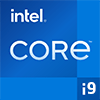
|
Intel Core i9-10885H
Intel UHD Graphics 630 @ 1.25 GHz |
||
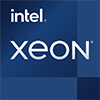
|
Intel Xeon E-2286M
Intel UHD Graphics P630 @ 1.25 GHz |
||

|
Intel Core i9-10980HK
Intel UHD Graphics 630 @ 1.25 GHz |
||
Estimated results for PassMark CPU Mark
Some of the CPUs listed below have been benchmarked by CPU-monkey. However the majority of CPUs have not been tested and the results have been estimated by a CPU-monkey’s secret proprietary formula. As such they do not accurately reflect the actual Passmark CPU mark values and are not endorsed by PassMark Software Pty Ltd.

|
AMD A6-3500
3C 3T @ 2.40 GHz |
||

|
AMD Phenom II X2 550
2C 2T @ 3.10 GHz |
||

|
Intel Core i5-3317U
2C 4T @ 1.70 GHz |
||
|
|
AMD A8-3800
4C 4T @ 2.70 GHz |
||

|
AMD A6-5350M
2C 2T @ 3.50 GHz |
||

|
Intel Core i3-2125
2C 4T @ 3.30 GHz |
||

|
Intel Celeron N3450
4C 4T @ 2.20 GHz |
||
Benchmarks

Geekbench 5 (SC)
2,488 entries
2,488 entries

Geekbench 5 (MC)
2,461 entries
2,461 entries

FP32 SP (iGPU)
2,039 entries
2,039 entries
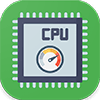
PassMark CPU-Mark
2,392 entries
2,392 entries

Geekbench 3 (SC)
942 entries
942 entries

Geekbench 3 (MC)
938 entries
938 entries

Cinebench R11.5 (MC)
836 entries
836 entries

Cinebench R11.5 iGPU
383 entries
383 entries
Description of the processor
The AMD A8-3800 is a processor with an integrated graphics unit (iGPU) that was released in the third quarter of 2011 by the Advanced Micro Devices (AMD) company. It is based on the Llano architecture and has a 4.00 megabyte level 3 cache. It is a 64-bit processor that supports the ISA extensions SSE3 and SSE4a. The processor is manufactured with a structure width of 32 nanometers and is designed for the FM1 socket.The AMD A8-3800 is a quad-core processor, i.e. a processor with 4 physical cores. Hyperthreading is not supported by the AMD A8-3800, so it stays with 4 threads. The individual cores have a base clock frequency of 2.40 gigahertz. However, the processor also has a turbo mode in which the cores can increase the clock frequency to up to 2.70 gigahertz. Furthermore, the AMD A8-3800 has a free multiplier, which can be used to exceed it. However, special cooling is then required for this, and a standard fan is then no longer sufficient to cool the processor sufficiently.
In the processor benchmark Geekbench 5, the AMD A8-3800 achieves a single-core score of 368 and is thus on a par with the Intel Pentium E5400 released in 2009. The multi-core score is 1354 points, which is about as fast as a 2012 Intel Core i3-3220.
The AMD Radeon HD 6550D is used as the internal graphics unit. This iGPU clocks at 0.6 gigahertz and has 5 execution units. With this, the graphics processor achieves an FP32 computing power of 450 gigaflops.
The TDP of the processor is 65 watts and DDR3-1600 modules can be connected as main memory via the 2 available memory channels. Memory with automatic error correction (ECC memory) is not supported.
Popular comparisons
back to index




